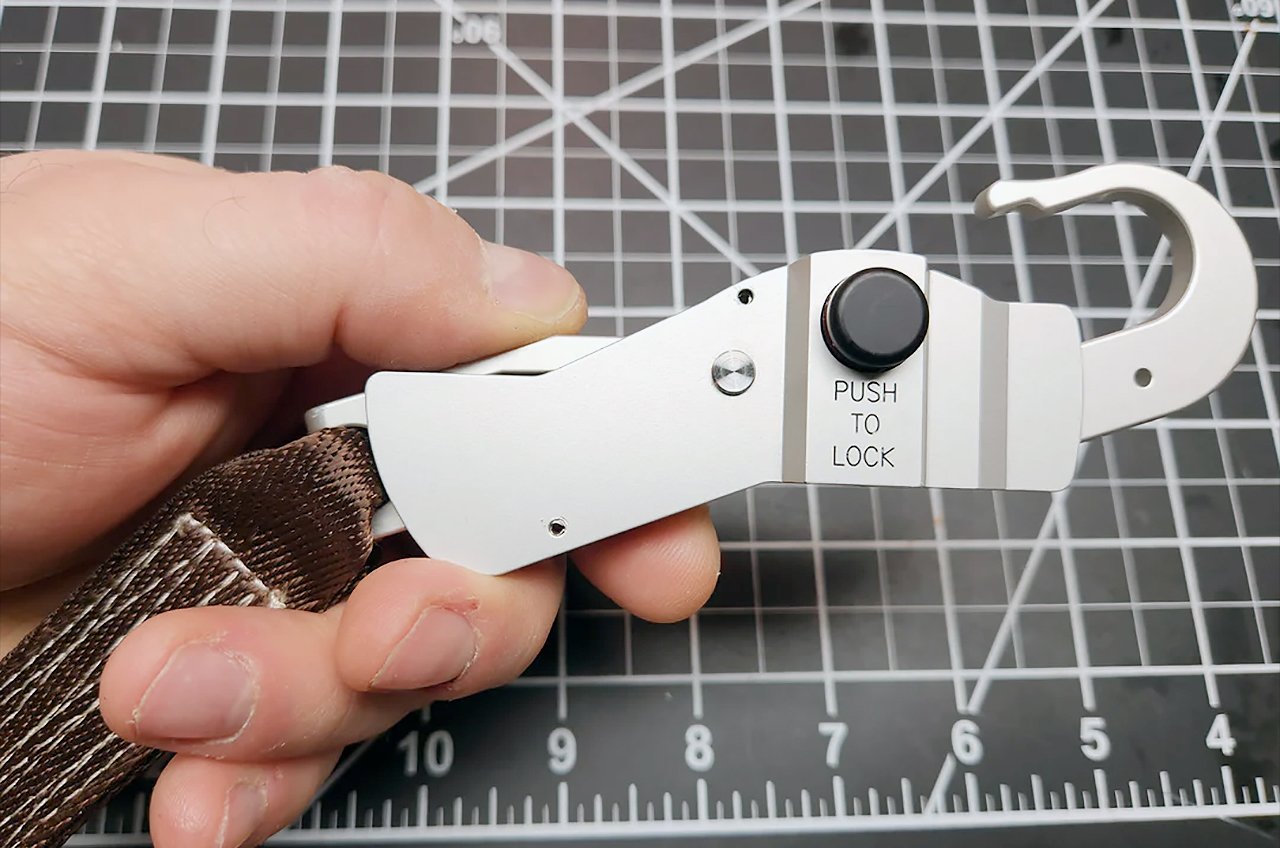Apollo 'hook-up:' New keychain replicates carabiner used on the moon
"This is as close to the real thing as possible, since they were first made in the 1960s."

Now you have can get "hooked" on space history every time you grab for your car keys.
Luna Replicas, a space collectibles dealer, has partnered with Global Effects, a Hollywood prop house, to produce full-size, fully functional reproductions of the tether hook that was used by NASA's Apollo astronauts while on the moon and during deep space EVAs (extravehicular activities or spacewalks). More than just a display object, the replica hook has been paired with a nylon strap and metal shackle to securely hold up to eight keys.
"This is as close to the real thing as possible, since they were first made in the 1960s," wrote Max Kaiserman, Luna Replicas' founder, in a post announcing the Apollo Tether Hook Keychain on Facebook. "This was an incredible project, and the first completely ground-up Apollo hardware reproduction we undertook."
Related: NASA's 17 Apollo moon missions in photos

The Apollo Tether Hook Keychain retails for $195 each. A first batch has already sold out. Luna Replicas is now accepting pre-orders for hooks that will be ready to ship on or about March 11.
Global Effects also has hooks for sale on eBay, although they are offered without the keychain attachment.
Originally designed for astronauts wearing spacesuit gloves, the snap hook was purposely kept simple, with a single action button that showed green for locked and red for unlocked. Produced with various part numbers, style differences and in two sizes based on their mission tasks, the snap hook made by Luna Replicas and Global Effects was based on one used by the first person to walk on the moon.
Breaking space news, the latest updates on rocket launches, skywatching events and more!
"We decided to recreate SEB33100200-303, which was one of the hooks used on Apollo 11 by Neil Armstrong in the LM [lunar module] on the surface of the moon," Kaiserman wrote, describing the replica on the Luna Replicas' website.
After completing the first-ever moonwalk, Armstrong and Buzz Aldrin were given time to sleep inside the LM "Eagle." Aldrin found a place to lie down on the floor, while Armstrong suspended himself above.
"I made a hammock out of a waist tether, which I attached to some of the structure handholds, to hold my feet up in the air and in the middle of the cockpit," he said during a technical briefing after returning to Earth.
Armstrong brought that waist tether — with its small and large snap hooks — back home as a souvenir of the first moon landing. Later Apollo astronauts used similar waist tethers and hooks to secure equipment on the moon and during spacewalks after leaving the lunar surface.

Luna Replicas and Global Effects milled their replica hooks from aluminum and then hard anodized each in a process that was similar to how the original hooks were made.
"The part was modeled directly off of a real flown Apollo tether hook," said Chris Gilman, owner and founder of Global Effects.
That said, unlike the hook used by Armstrong, the 2023 edition is not intended for load-bearing purposes. Using the replica to rig your own hammock — on Earth or the moon — is "at your own risk," warns Kaiserman.
Follow collectSPACE.com on Facebook and on Twitter at @collectSPACE. Copyright 2023 collectSPACE.com. All rights reserved.

Robert Pearlman is a space historian, journalist and the founder and editor of collectSPACE.com, a daily news publication and community devoted to space history with a particular focus on how and where space exploration intersects with pop culture. Pearlman is also a contributing writer for Space.com and co-author of "Space Stations: The Art, Science, and Reality of Working in Space” published by Smithsonian Books in 2018.
In 2009, he was inducted into the U.S. Space Camp Hall of Fame in Huntsville, Alabama. In 2021, he was honored by the American Astronautical Society with the Ordway Award for Sustained Excellence in Spaceflight History. In 2023, the National Space Club Florida Committee recognized Pearlman with the Kolcum News and Communications Award for excellence in telling the space story along the Space Coast and throughout the world.

